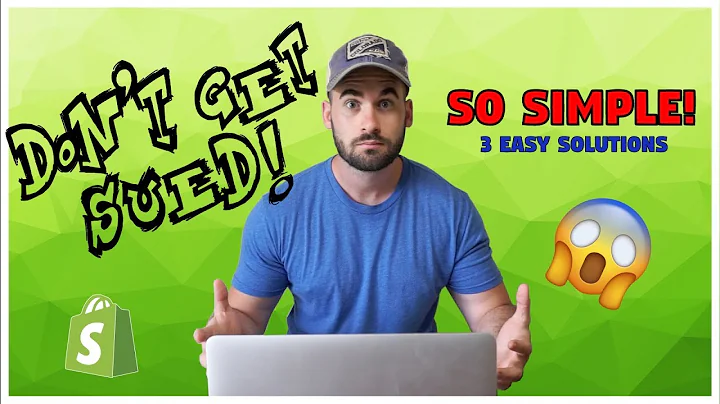Automate Your Facebook Ads for Success
Table of Contents:
- Introduction
- The Three Phases of Facebook Ads
- 2.1 Testing Phase
- 2.2 Scaling Phase
- 2.3 Automation Phase
- Content Sourcing and Testing System
- 3.1 Working with Micro Influencers
- 3.2 Considerations when Hiring Micro Influencers
- 3.3 Benefits of User-Generated Content
- Creative Sourcing and Post Production
- 4.1 Importance of Video Editors
- 4.2 Hiring a Full-Time Video Editor
- 4.3 Establishing a Process for Hiring Video Editors
- Utilizing User Generated Content (UGC)
- 5.1 Utilizing Apps like Archives for UGC
- 5.2 Sourcing UGC from Influencers via Join Brands
- Media Buyers and Automation
- 6.1 The Role of Media Buyers in Facebook Ads
- 6.2 Avoiding Agency-Style Media Buyers
- 6.3 Hiring a Dedicated Media Buyer
- Leveraging Facebook Rules for Automation
- 7.1 Defining Key Performance Indicators (KPIs)
- 7.2 Utilizing Third-Party Data Tools for Optimization
- Harnessing the Power of AI
- 8.1 Testing Ad Variations with Chat GPT
- 8.2 Optimization and Targeting Strategies with Chat GPT
- Introducing ESS 3.0 Program
- 9.1 Focus on Advertorials
- 9.2 Mastery of Traffic Systems
- 9.3 Creative Sourcing for Scaling Success
- Conclusion
Automating Your Facebook Ads for Optimal Results
The world of advertising has transformed with the advent of platforms like Facebook. It offers immense opportunities for businesses to showcase their products and services to a vast audience. However, running effective Facebook ads requires a strategic approach and constant optimization to yield the desired results. In this article, we will explore the key steps and strategies involved in automating your Facebook ads for optimal results.
1. Introduction
In this digital age, advertising on Facebook has become an essential component of any successful marketing strategy. It allows businesses to reach a massive user base, target specific demographics, and generate leads or sales. However, as the platform continues to evolve, it becomes crucial to stay updated with the latest trends and techniques.
2. The Three Phases of Facebook Ads
To effectively automate your Facebook ads, it is essential to understand the three phases involved: testing, scaling, and automation. Each phase requires specific strategies and techniques to maximize the potential of your advertising campaigns.
2.1 Testing Phase
The testing phase is vital for identifying the right product, creatives, and target audiences for your e-commerce business. By experimenting with different variables, you can optimize your ads for better performance and achieve your desired sales goals. During this phase, it is crucial to track and analyze key performance indicators (KPIs) to guide your decision-making process.
2.2 Scaling Phase
Once you have identified the winning combination of products, creatives, and audience targeting, you can move into the scaling phase. This entails increasing your ad spend and expanding your reach to amplify your results. Scaling requires careful monitoring of your metrics and making data-driven decisions to maintain profitability and efficiency.
2.3 Automation Phase
After successfully scaling your Facebook ads, it is essential to shift into the automation phase. This phase involves systemizing your ad management, building a dedicated team, and leveraging technology to reduce manual efforts. By automating certain tasks, you can free up your time and focus on other aspects of your business growth.
3. Content Sourcing and Testing System
To achieve optimal results in your Facebook ads, it is crucial to establish a robust content sourcing and testing system. This system should continually feed your ads with fresh and engaging content, ensuring relevance and resonance with your target audience.
3.1 Working with Micro Influencers
One effective way to source content for your ads is by collaborating with micro-influencers. These are social media users with smaller yet highly engaged following. By partnering with micro-influencers, you tap into their niche audiences and generate content that resonates with your own target audience. This approach can be cost-effective, as micro-influencers often charge lower fees compared to larger influencers.
3.2 Considerations when Hiring Micro Influencers
When hiring micro-influencers, there are several factors to consider. Firstly, their follower count should typically be less than thirty thousand, as beyond that, their rates tend to increase significantly. It is also worth noting that some micro-influencers may even accept non-monetary compensation, such as receiving your product in exchange for creating content. To expedite the process, consider sending them the equivalent of your product that is readily available, such as those offered on Amazon.
3.3 Benefits of User-Generated Content
User-generated content (UGC) can be a powerful tool for showcasing the value of your products and services. It not only adds authenticity to your ads but also provides a cost-effective means of generating content. Utilizing apps like Archives or platforms like Join Brands allows you to source UGC directly from influencers and customers while maintaining a reliable feedback system.
(Follow the same format for the rest of the headings and subheadings)






















